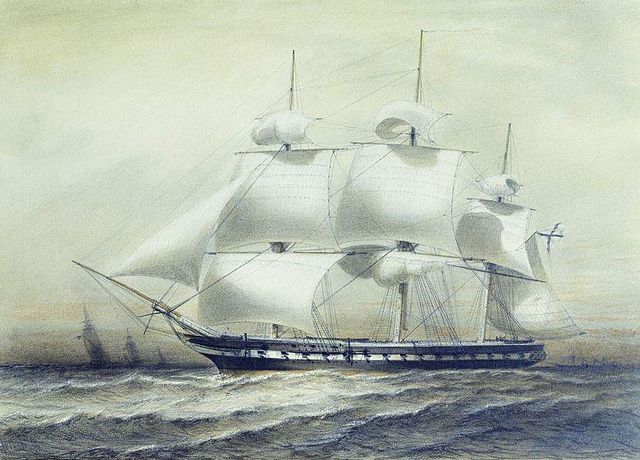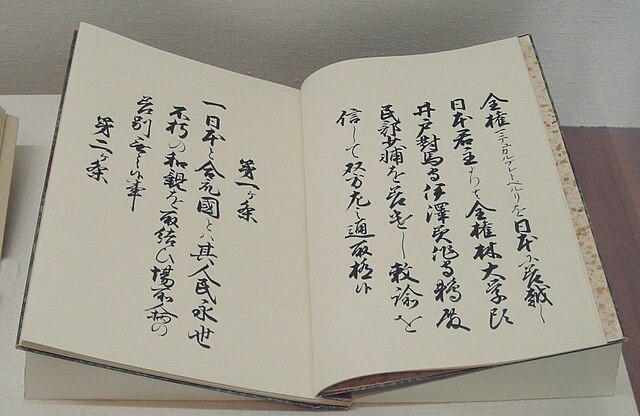The Treaty of Shimoda of February 7, 1855, was the first treaty between the Russian Empire, and the Empire of Japan, then under the administration of the Tokugawa shogunate. Following shortly after the Convention of Kanagawa signed between Japan and the United States, it effectively meant the end of Japan's 220-year-old policy of national seclusion (sakoku), by opening the ports of Nagasaki, Shimoda and Hakodate to Russian vessels and established the position of Russian consuls in Japan and defined the borders between Japan and Russia.
Japanese copy of the Treaty of Shimoda, February 7, 1855
The Russian frigate Pallada that carried Vice-Admiral Yevfimy Putyatin to Japan.
Putyatin in Nagasaki, Japanese painting 1853.
The sinking of Diana, Illustrated London News 1856.
The Convention of Kanagawa, also known as the Kanagawa Treaty or the Japan–US Treaty of Peace and Amity, was a treaty signed between the United States and the Tokugawa Shogunate on March 31, 1854. Signed under threat of force, it effectively meant the end of Japan's 220-year-old policy of national seclusion (sakoku) by opening the ports of Shimoda and Hakodate to American vessels. It also ensured the safety of American castaways and established the position of an American consul in Japan. The treaty precipitated the signing of similar treaties establishing diplomatic relations with other Western powers.
Japanese copy of the Convention of Kanagawa, ratified February 21, 1855





